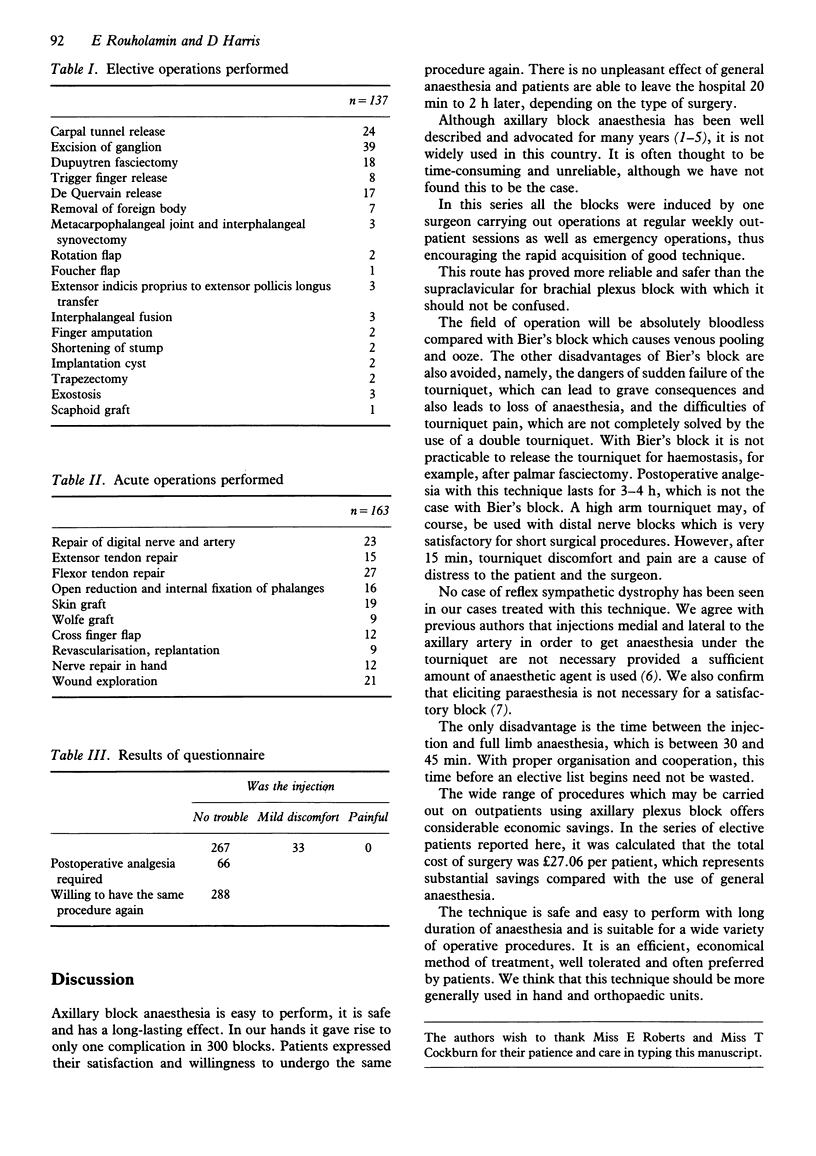Abstract
A total of 300 consecutive anaesthetic axillary blocks was performed over a period of 18 months in 291 patients. These blocks were carried out for emergency and elective hand surgery. Patients did not require any preparation or starving; 20-30 ml of 1% prilocaine according to the size of the patient is used for the block. A minimum induction time of 45 min is needed and patients are able to leave the hospital 20 min-2 h after operation, depending on the nature of the operation. No operation had to be abandoned due to failure of the block. Eleven patients required further injection of local anaesthetic during the operation. The duration of operations ranged from 10 to 130 min. Only 20% needed postoperative analgesia. The technique is easy to perform, it is safe and has long-lasting analgesic effect. It is an efficient, economical method of treatment, well tolerated and often preferred by patients. We think axillary block anaesthesia should be more generally used in hand and orthopaedic units.
Full text
PDF



Selected References
These references are in PubMed. This may not be the complete list of references from this article.
- ACCARDO N. J., ADRIANI J. Brachial plexus block; a simplified technic using the axillary route. South Med J. 1949 Oct;42(10):920–923. doi: 10.1097/00007611-194910000-00021. [DOI] [PubMed] [Google Scholar]
- WINNIE A. P., COLLINS V. J. THE SUBCLAVIAN PERIVASCULAR TECHNIQUE OF BRACHIAL PLEXUS ANESTHESIA. Anesthesiology. 1964 May-Jun;25:353–363. doi: 10.1097/00000542-196405000-00014. [DOI] [PubMed] [Google Scholar]


